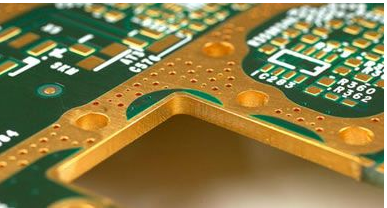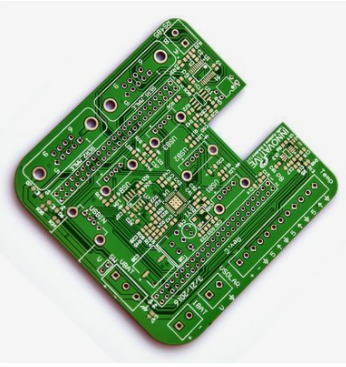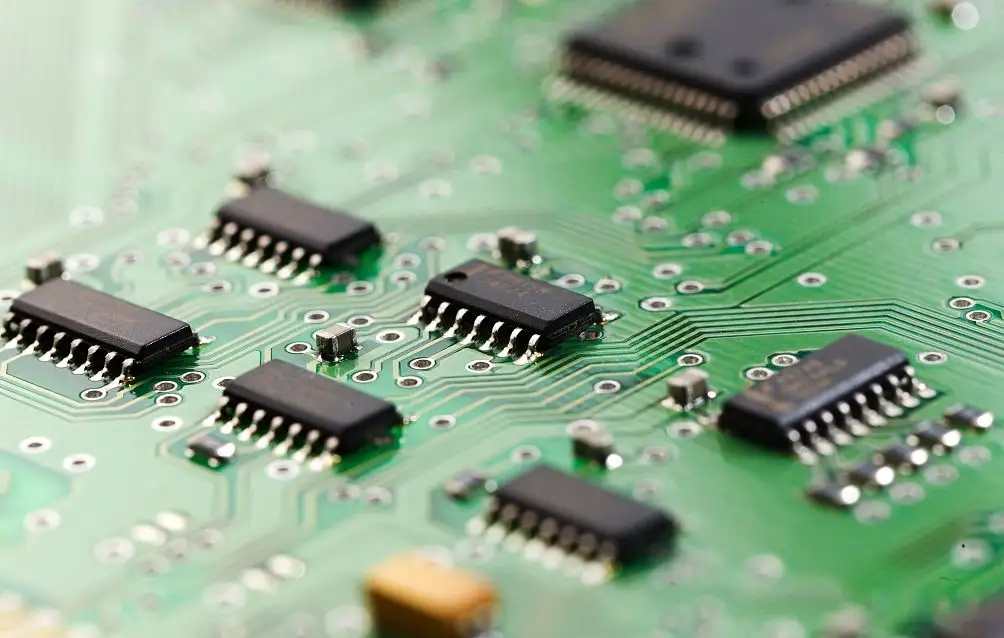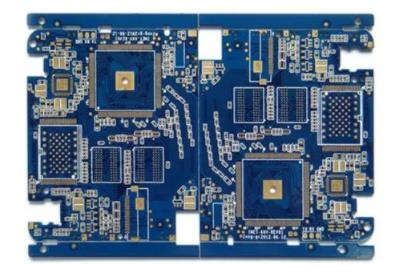
There are many kinds of PCB resistors. Common resistors include carbon film resistors, cement resistors, metal film resistors and wire wound resistors; Special resistance includes varistor, thermistor, photosensitive resistor, etc. The characteristIC parameters of different types of resistors have certain differences, and the points to be considered when using the circuit are also different. For the engineers just in contact with the circuit design, they are likely to ignore some special parameters of the resistance, which leads to the failure to ensure the stability and reliability of PCB products. Only by correctly understanding each parameter of the resistor and the precautions for selection, and comprehensively understanding the real role of the resistor in the circuit, can the quality of the product be guaranteed from the bottom of the most basic circuit design.

Basic parameters of resistance:
The engineers who are new to the design of hardware circuit boards may have the first impression of resistance that the resistance is the resistance of the conductor to the current described in the physics book, which is expressed by the symbol R, and the units are ohm, kiloohm and megohm, respectively expressed by Ω, K Ω and M Ω. The main parameters concerned are 1). Nominal resistance value: the resistance value MARKed on the resistor; 2) Allowable error: the percentage of the ratio between the difference between the nominal resistance value and the actual resistance value and the nominal resistance value is calLED the resistance value deviation, which represents the accuracy of the resistor. In circuit design, it is not enough to focus on these two parameters. There are two important parameters that must be paid attention to in the design: rated power and withstand voltage value. These two parameters have a great impact on the reliability of the whole system.
If the current flowing through the resistor in the circuit is 100mA and the resistance value is 100 Ω, the power consumption on the resistor is 1W. It is inappropriate to choose a common chip resistor, such as 0805 or 1206, which may cause problems due to the low rated power of the resistor. Therefore, the rated power of the selected resistor shall be more than 1W (the power margin of the selected resistor in circuit design is generally more than 2 times), otherwise the power consumed by the resistor will overheat the resistor and make it invalid.
SIMilarly, if the withstand voltage value is not properly selected, the system design will fail due to the breakdown of resistance. For example, in the design of AC-DC switching power supply module, according to the requirements of GB4943.1 standard, after the plug or connector is disconnected, the residual voltage on the input terminals L and N will attenuate to 37% of the initial value within 1s. Therefore, in the design, one or two M Ω impedance resistors will be used to discharge energy, and the input terminal is high voltage, that is, both ends of the resistance will withstand high voltage, When the withstand voltage value of the resistance is low and the input terminal is high, failure will occur. Table 1 below shows the parameters of common SMT thick film resistors, which should be verified with the manufacturer of the selected devices when final selection is made.
Table 1 Common SMT thick film resistors:
Note: For reference only, the final PCB manufacturer's instructions shall prevail
The role of resistance in the circuit:
1 Basic functions:
Electronic engineers have learned the basic role of resistance, that is, it is used as a voltage divider, current divider and load resistor in the circuit; It can form filter and delay circuit together with capacitor, and be used as sampling resistance in power circuit or control circuit; It is used as a bias resistor to determine the operating point in semiconductor tube circuits. For these functions, there are many applications in circuits and they are also very important, so we will not give too much description. The following mainly introduces the role of 0 Ω resistance and special resistance in electronic circuit design and the precautions for use.
Function of 20 ohm resistance on the circuit:
It is believed that many new electricians will often see a 0 Ω resistance on the circuit when they look at some electronic products designed by predecessors. Why should we design such a resistance? Why not just connect a drawing board directly? Through the search and sorting of materials, the key points are as follows:
Analog ground and digital ground single point grounding:
As long as it is the earth, it will eventually be received together, and then enter the earth. If they are not connected together, they are "floating to the ground". There is a pressure difference, which is easy to accumulate charges and cause static electricity. The ground is the reference 0 potential. All voltages are derived from the reference ground. The ground standards should be consistent, so all kinds of grounds should be shorted together. It is believed that the earth can absorb all electric charges and maintain stability all the time, which is the final ground reference point. Although some boards are not grounded, the power plant is grounded, and the power supply on the board will eventually return to the power plant. If analog ground and digital ground are directly connected in a large area, mutual interference will be caused. There are four ways to solve this problem: 1. Connect with magnetic beads; 2. Connect with capacitance; 3. Inductively connected; 4. Connect with a 0 ohm resistance.
The equivalent circuit of the magnetic bead is equivalent to a band stop wave limiter, which can only significantly suppress the noise at a certain frequency. The noise frequency needs to be estimated in advance when using, so as to select an appropriate model. When the frequency is uncertain or unpredictable, the magnetic bead does not match; Capacitance is directly connected to AC, causing floating ground; The inductance has large volume, many stray parameters and is unstable; The 0 ohm resistor is equivalent to a very narrow current path, which can effectively limit the loop current and suppress the noise. Resistance has attenuation effect in all frequency bands (0 Ω resistance also has impedance), which is stronger than magnetic bead.
Used for current loop during jumper connection:
When the electric ground plane is divided, the shortest return path of the signal is broken. At this time, the signal loop has to bypass, forming a large loop area, and the influence of electric field and magnetic field becomes stronger, which is easy to interfere/be interfered with. Jumping 0 ohm resistance on the partition can provide a short return path and reduce interference.
Configuration circuit:
Generally, jumper and dial switch are not allowed on the product. Sometimes the user will move the settings randomly, which is easy to cause misunderstanding. In order to reduce maintenance costs, 0 ohm resistance is used to replace jumpers and other welding on the board. The vacant jumper is equivalent to the antenna at high frequency, and the effect of patch resistance is good.
Other uses:
For cross line debugging/testing during wiring: at the beginning of the design, a resistance should be connected in series for debugging, but the specific value cannot be determined. After such a device is added, it is convenient to debug the circuit in the future. If the debugging result does not require adding a resistance, a 0 ohm resistance should be added. The temporary replacement of other chip devices as temperature compensation devices is more often due to the need for EMC countermeasures. In addition, the 0 ohm resistance is SMAller than the parasitic inductance of the vias, and the vias also affect the ground plane (because they need to dig holes). The summary is as follows:
1. There is no function in the circuit, just for the convenience of debugging or compatible design.
2. It can be used as jumper. If a section of line is not used, it can be directly pasted with the resistance (without affecting the appearance)
3. When the parameters of the matching circuit are uncertain, 0 ohm shall be used instead. During actual debugging, the parameters shall be determined, and then the components with specific values shall be used instead.
4. When you want to measure the current consumption of a part of the circuit, you can remove the 0 ohm resistance and connect the ammeter to facilitate the measurement of current consumption.
5. When wiring, you can also add a 0 ohm resistance if it is really impossible.
6. In the case of high-frequency signals, it is used as an inductor or capacitor (related to the characteristics of external circuits), mainly to solve EMC problems. For example, between ground and power supply and IC pin.
7. Single point grounding (refers to that protective grounding, working grounding and DC grounding are separated from each other on the equipment and become independent systems respectively).
Function of special resistance in peripheral protection circuit of power module:
The most common special resistors are varistors and thermistors, which play a key role in the design and application of AC-DC switching power supply. Understand the characteristics and specific functions of these two resistors:
The varistor MOV is one of the most commonly used devices in the electromagnetic compatibility (EMC) of the circuit. It is widely used in the electronic circuit to protect the circuit from possible damage due to the transient voltage mutation of the power supply system. Its characteristic is generally understood as that when the front end voltage is higher than the opening voltage of the varistor, the varistor is broken down, the resistance value of the varistor is reduced, and the current is diverted to prevent the subsequent stage from being damaged or interfered by excessive transient voltage, thus protecting sensitive electronIC components. Circuit protection is to use the nonlinear characteristics of the varistor. When the overvoltage occurs between the two poles of the varistor, the varistor can clamp the voltage to a relatively fixed voltage value, so as to protect the subsequent circuit. The main parameters of the varistor are: varistor voltage, through current capacity, junction capacitance, response time, etc.
However, do not think too much about the role of the varistor. The varistor cannot provide complete voltage protection. The energy or power that the varistor can withstand is limited and cannot provide continuous overvoltage protection. Continuous overvoltage will damage the protective device (varistor) and cause damage to the equipment. The parts that the varistor cannot provide protection include: the impact current when starting, the over-current during short circuit, and the sudden drop of voltage, which require other protection methods.
Thermistors are temperature related devices, generally divided into two types. NTC is a negative temperature coefficient thermistor, that is, the higher the temperature, the smaller the impedance; PTC is a positive temperature coefficient thermistor, that is, the higher the temperature, the greater the impedance. It plays an important role in circuit design to use the temperature sensitive characteristics of impedance.
NTC in the circuit mainly suppresses the starting current during circuit startup. During system startup, due to the existence of power circuit, capacitive and inductive load in the system, a very large impact current will appear at the moment of startup. If the instantaneous current resistance of PCB is not taken into account during the selection of circuit components, the components will be easily damaged by breakdown during multiple startup operations of the system. Adding NTC to the circuit is equivalent to increasing the input impedance to reduce the impact current when the input circuit starts. When the system is in a stable state, the NTC heats up, and the impedance decreases according to its negative temperature characteristics, so the loss on NTC is also reduced, The overall loss of the system is reduced.
PTC can play the role of fuse in the circuit, so it is also called self recovery fuse. In the process of system operation, when the circuit is abnormal, leading to a large current, if there is a PTC in series in this part of the circuit, it means that there is a large current flowing through the PTC, and PTC heats up. According to its positive temperature characteristics, its impedance will become large, making the impedance of the whole circuit larger, so that the current of the circuit becomes smaller, playing the role of a fuse. According to its positive temperature characteristics, another function of PTC is to achieve over temperature protection in the circuit.
Summary:
PCB resistance knowledge covers a lot, not only can be applied well after knowing Ohm's Law, but also includes materials and their special properties. For example, the resistance value of resistance components is generally related to temperature, material, length, and cross-sectional area. The physical quantity that measures the resistance affected by temperature is the temperature coefficient, which is defined as the percentage of resistance value change when the temperature increases by 1 ℃; The main physical feature of resistance is that it transforms electric energy into heat energy, which can also be said to be an energy consuming element. The current will generate losses through it, which is expressed in the form of heat energy; PCB resistance usually plays the role of voltage division and shunt in the circuit; For signals, both AC and DC signals can pass through resistance, etc. As a hardware engineer, if you want to use PCB components skillfully, you need to have a deep understanding of their materials, electrical characteristics and particularity.
然后
联系
电话热线
13410863085Q Q

微信

- 邮箱











